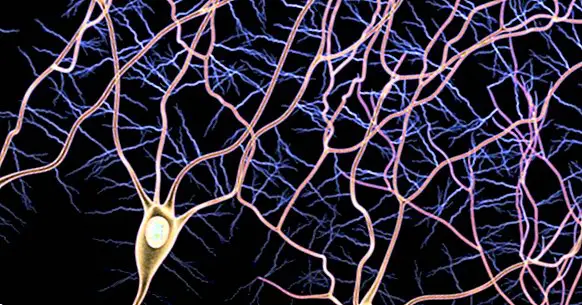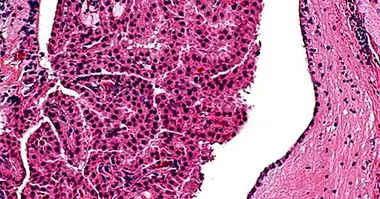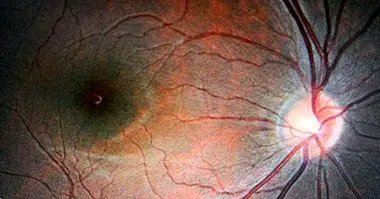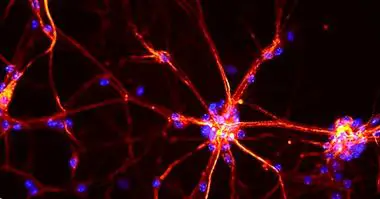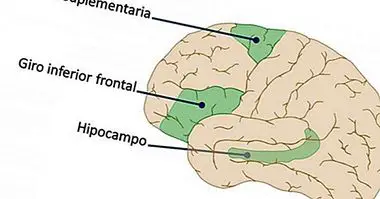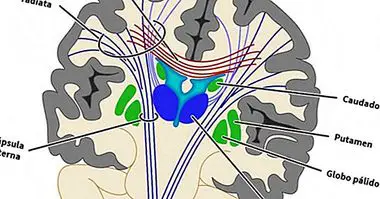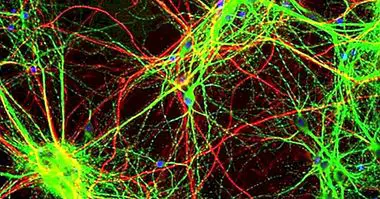Via afferent and via efferent: the types of nerve fibers
It is natural to associate the concepts "neuron" and "brain". After all, Neurons are the type of cell to which we normally attribute the possibility of thinking, reasoning and, in general, perform tasks related to the intellect.
However, neurons are also an essential part of the nerves that run throughout our body (along with glial cells). It is not strange, if we consider what the function of these nerve fibers is: make certain type of information travel through our organs and cellular tissues . Now, although all these data transmission channels basically do the same, there are certain nuances and differences between them that make it possible to classify them according to their function. That's why we talk about the difference between via afferent and the via efferent.
Aference and eference: a letter changes everything
To understand the concepts of the afferent and the efferent, it is very useful to imagine the functioning of the nervous system as cognitive psychologists do. they use the metaphor of the computer as a descriptive model of neural networks . According to this metaphor, both the brain and the entire nervous system function in a similar way as a computer does; it has a part of its structure dedicated to being in contact with the environment that surrounds it and another that is dedicated to working with data that has been stored and processed to obtain new information. Thus, the neurons of the brain and spinal cord would be this "internal" part of the computer, while the nerves that sprout from the spine and reach the most remote corners of the body are the part in contact with the outside.
This last part of the nervous system, called peripheral nervous system, is where the afferent and efferent pathways are located, are the input and output channels of the central nervous system, respectively .
The pathways through which sensory information travels
Thus, all the information that enters through the sensory neurons travels through the afferent pathways, that is, those that transform the information that gather the senses and transform them into nervous impulses . Instead, the efferent pathways are responsible for propagating electrical impulses that are intended to activate (or deactivate) certain glands and muscle groups. In this way, if we wanted to stick to a simple explanatory scheme about what is an afference and an eference, we would say that the former informs the central nervous system about what happens in the rest of the body and in the data about the environment that this receives, while the efferent neurons deal with "transmit orders" and initiate action.
In the same way, the word aferencia serves to designate the information that travels through these pathways of the peripheral nervous system, while the term eference is used to refer to the output (or output) of data that goes from the central nervous system to muscle fibers and glands responsible for releasing all kinds of substances and hormones.

An aid to remember better
The distinction between the afferent and the efferent is very useful to understand how we perceive and act on the environment, but It can also be quite problematic because it is easy to confuse both terms and use them to designate the opposite of what is meant.
Fortunately, using simple mnemonic tricks it is very easy to remember what each thing is, and the fact that these words are only differentiated by a letter makes remembering one also remembering the other. For example, the "a" of "afferent" can be related to the a arrival ("Arrival" and English), and the "e" of "efferent" with the first letter of "sending".
Neurons pawns?
The afferent and efferent pathways suggest a hierarchical functioning of the nervous system: while some neuronal groups inform about what happens in the rest of the body and transmit orders to implement plans, strategies and protocols of action Others make decisions and give orders that others will fulfill. However, the functioning of our nervous system is not as simple as it can be intuited in this very schematic vision of the trips that nerve information makes across the length and breadth of our body, for two basic reasons.
The first is that afferent and efferent neurons are not limited to passively transmitting information: they also cause it to transform. What reaches the spinal cord and the glands and muscles is a flurry of data whose shape depends in large part on how it has found each and every neuron through which it has traveled.
The second reason is that, although it is true that decision-making depends more on the brain than on the neural networks of the peripheral nervous system, it is not clear who is in charge over who, because they all occupy a place in a data cycle . After all, afferent neurons send information to the brain without which action plans can not be initiated, and the way in which the efferent pathways transmit the information will have an impact on the body and the environment that will then affect the afferent neurons and, therefore, the brain. Consider, for example, the fact of keeping a box of cookies to avoid the temptation to snack between meals: a change in the environment makes us think and feel differently than we would with the cookie box in sight .
In short, afferent and efferent neurons may have a simpler and easier task to study than that of nerve cells in the brain, but they still have a vital role in our day to day life.

